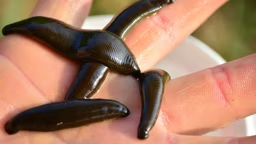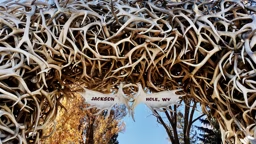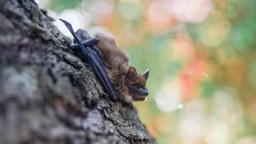A team of engineers couldn’t have built woodpeckers any better. From beak to tail, woodpeckers are adapted perfectly.
Not everyone, of course, is a fan of woodpeckers. Some cabin owners may curse them from time to time for creating holes that need repair. The bird lovers among us would argue, however, that woodpeckers more than make up for damage to siding with extraordinary avian style and verve. Next time you find yourself muttering under your breath on a ladder with hardware cloth and caulk in hand, try to take a moment to appreciate the little villain that caused you such adventure.
After all, few creatures more beautifully illustrate the biological version of the old philosophy that form follows function.
Ratta tap tap tap. So what’s with all the pounding?
The answer is three-fold. In order to eat, a woodpecker must use its beak with vengeance, pounding and tearing away at bark and pulpy wood, searching for insects to eat. To build a home, it excavates cavities in dead and dying trees, cavities that must face the warmth of the morning sun. To defend all of this food and housing, a woodpecker continues the abuse to skull and bill, pounding out a territorial message with rapid drumming.
All of this pounding, tearing, excavating and drumming is done in defiance of gravity with tail propped and feet gripping deep into the tree.
At the end of the day, the bird searches for a hole in a tree for its nighttime roost. It enters the hole not knowing who may already be there – mouse, snake, squirrel, owl or hungry raccoon.
It is a life of predacious peril in daylight too. Woodpeckers are common prey for smaller bird-eating hawks and falcons, including the rare peregrine falcon.
Not everyone, of course, is a fan of woodpeckers. Some cabin owners may curse them from time to time for creating holes that need repair. The bird lovers among us would argue, however, that woodpeckers more than make up for damage to siding with extraordinary avian style and verve. Next time you find yourself muttering under your breath on a ladder with hardware cloth and caulk in hand, try to take a moment to appreciate the little villain that caused you such adventure.
After all, few creatures more beautifully illustrate the biological version of the old philosophy that form follows function.
Ratta tap tap tap. So what’s with all the pounding?
The answer is three-fold. In order to eat, a woodpecker must use its beak with vengeance, pounding and tearing away at bark and pulpy wood, searching for insects to eat. To build a home, it excavates cavities in dead and dying trees, cavities that must face the warmth of the morning sun. To defend all of this food and housing, a woodpecker continues the abuse to skull and bill, pounding out a territorial message with rapid drumming.
All of this pounding, tearing, excavating and drumming is done in defiance of gravity with tail propped and feet gripping deep into the tree.
At the end of the day, the bird searches for a hole in a tree for its nighttime roost. It enters the hole not knowing who may already be there – mouse, snake, squirrel, owl or hungry raccoon.
It is a life of predacious peril in daylight too. Woodpeckers are common prey for smaller bird-eating hawks and falcons, including the rare peregrine falcon.
Engineering 101. Start with a sharp, chisel-shaped beak. Alone, the beak is useful in tearing away bark and picking at deadwood until insects, spiders and other prey are revealed. But the beak is not effective alone. A woodpecker has a whole host of cooperating adaptations to help it survive.
The work of a woodpecker puts it in contact with mold, dust and sawdust. To prevent these airborne hazards from entering its nostrils, woodpeckers are often gifted with a specialized set of bristle feathers that protect the nostrils. These are especially easy to spot at the base of a downy woodpecker’s beak.
Tongues are a fascinating part of these birds’ anatomy, so long that they wrap around the skull. This long and strange equipage can zap outward, deep into the crevices of trees, to retrieve morsels of food with a bristled or barbed tip.
To chisel a hole in a tree, the woodpecker must be securely poised against the pull of gravity. Three adaptations create a sort of tripod that allows for strength and stability in a vertical environment: a stiff set of tail feathers; feet ideal for gripping with two toes facing forward and two toes facing back (a couple of species of woodpeckers are unusual in that they have only three toes); and strong bands of leg muscles anchoring their less-flexible legs to the middle of the lower back and the fused bones of the “pelvis.”
Woodpeckers work in a combat zone. Like most birds, when flying from tree to tree or over bodies of water, they are vulnerable to attacks from hawks and falcons. But many woodpeckers have a way of dealing with that. Flickers, sapsuckers and acorn woodpeckers have a bright, white patch just above the tail, much like the tag end of a white-tailed deer. This patch of white feathers draws the attention of the predator. As the hawk draws nearer, the woodpecker lands on a tree and folds its wings, covering the spot of white with darker, mixed hues. With the white patch gone, the predator loses its target. The dogfight is over, and Mr. Chisel Beak is victorious.
The networker. When a woodpecker pounds a hole into a tree, he leaves behind a cavity that also benefits a diverse community of other beings. For example, the sapsucker drills tiny hole after tiny hole in the bark of a tree, creating “sap wells.” These are areas where the tree’s sap flows out, attracting many different birds and insects. The insects that are stuck in the sap provide further nourishment for the sapsucker and any others who choose to feed there.
Because of the work that woodpeckers put into excavating their homes, ornithologists categorize woodpeckers as “primary cavityexcavators,” but they are not the only birds that use the hole they create. Many other species of birds – including tree swallows, bluebirds, boreal owls, American kestrels, wood ducks and hooded mergansers – rely on the work of woodpeckers as well. These other species, termed “secondary cavity users,” inherit the already-used homes in subsequent nesting seasons.
Woodpeckers have established a place in every forested and cactus-covered community. They have been here for thousands of years, adapted to their pristine environments right down to the last feather. They are testament that form follows function. But they prove a further point: When form follows function in the natural world, the end result is beauty and style.
Brian M. Collins photographs nature and watches the birds in many wild places along the St. Croix River and the Great Lakes. See his photography at Images in Natural Light on the Web, www.imagesinnaturallight.com.
Because of the work that woodpeckers put into excavating their homes, ornithologists categorize woodpeckers as “primary cavityexcavators,” but they are not the only birds that use the hole they create. Many other species of birds – including tree swallows, bluebirds, boreal owls, American kestrels, wood ducks and hooded mergansers – rely on the work of woodpeckers as well. These other species, termed “secondary cavity users,” inherit the already-used homes in subsequent nesting seasons.
Woodpeckers have established a place in every forested and cactus-covered community. They have been here for thousands of years, adapted to their pristine environments right down to the last feather. They are testament that form follows function. But they prove a further point: When form follows function in the natural world, the end result is beauty and style.
Brian M. Collins photographs nature and watches the birds in many wild places along the St. Croix River and the Great Lakes. See his photography at Images in Natural Light on the Web, www.imagesinnaturallight.com.













